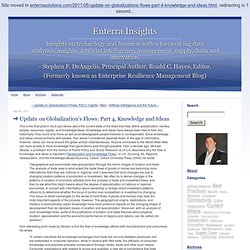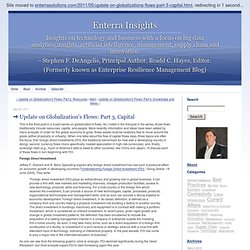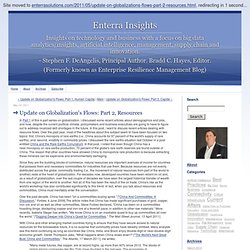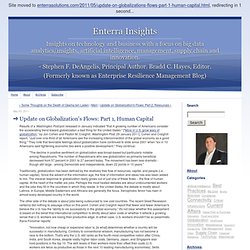

Globalization and the Law of Unintended Consequences. As social and political upheaval and civil unrest have spread across the globe, it has become clear that the problems facing Western countries are neither transient nor temporary.

Europe, the United Kingdom and the United States share a common set of problems over and above economic decline and sovereign debt issues linked to problems of the global financial system. The issues surrounding civil unrest comprise a lack of economic opportunity, political disenfranchisement, erosion of individual rights, a systematic lack of accountability from local authorities to national leaders, deteriorating credibility of political and financial leaders and disintegrating national government legitimacy.
The reason that the above problems are common to Europe, the United Kingdom and the United States is that they are all linked to globalization. The financial crisis of 2008 and the global recession that followed suggest that globalization may fail for basic economic reasons. Rebalancing: Globalization’s Game of Musical Chairs. Monday I received another e-mail from Wikistrat today, this one describing “The Great Rebalancing,” which they characterize as follows: “The ‘great rebalancing’ describes a future world economy that depends less on American overconsumption (high rates of both imported goods and capital exports) and relies more on emerging markets’ domestic consumption (and thus a reduction of their export-driven growth strategies).

The ‘great unbalancing’ of the global economy took a couple of decades to unfold, so it’s naturally going to take quite some time for any rebalancing.” Enterprise Resilience Management Blog: Update on Globalization's Flows: Part 4, Knowledge and Ideas. This is the final post in my 4-part series about the current state of the flows that help define globalization, namely: people, resources, capital, and knowledge/ideas.

Knowledge and ideas have always been free to flow; but, historically, they could only move as fast as knowledgeable people traveled or corresponded. Since knowledge and ideas moved primarily with people, they weren't considered separate flows. In the age of information, however, ideas can move around the globe almost instantaneously. Anyone connected to the World Wide Web can have access to more knowledge than generations past thought possible. Enterprise Resilience Management Blog: Update on Globalization's Flows: Part 3, Capital. This is the third post in a 4-part series on globalization's flows.

As I noted in the first post in the series, those flows traditionally include resources, capital, and people. More recently information and ideas have been added by many analysts. In order for the global economy to grow, these assets must be relatively free to move around the globe (either physically or virtually). When one talks about the flow of capital these days, three topics are often the focus: first, foreign direct investments (FDI) (the traditional benchmark for how well a developing country is doing); second, currency flows (more specifically, heated speculation in high-risk currencies); and, finally, sovereign debt (e.g., much of America's debt is owed to other countries, like China and Japan). I'll discuss each of these flows in turn beginning with FDI. Foreign Direct Investment Jeffrey P. "Foreign direct investment (FDI) plays an extraordinary and growing role in global business.
Currency Flows Sovereign Debt. Enterprise Resilience Management Blog: Update on Globalization's Flows: Part 2, Resources. In Part 1 of this 4-part series on globalization, I discussed some recent articles about demographics and jobs, and how, despite the current political climate, policymakers and business executives are going to have to figure out to address localized skill shortages in the future.

In this post, I want to discuss recent articles dealing with resource flows. Over the past year, most of the headlines about this subject seem to have been focused on two topics: first, China's monopoly of rare earths (i.e., China accounts for 97 percent of the world's supply of rare earths); and, second, volatility in commodity prices. I discussed the rare earths situation last October in a post entitled China and the Rare Earths Conundrum.
In that post, I noted that even though China has a near-monopoly on rare earths production, 70 percent of the globe's rare earth reserves are found outside of China. Over the past decade, China has been "on a commodities buying spree. " Enterprise Resilience Management Blog: Update on Globalization's Flows: Part 1, Human Capital. Results of a Washington Post poll released in January indicated "that A growing number of Americans consider the accelerating trend toward globalization a bad thing for the United States.

" ["More in U.S. grow wary of globalization," by Jon Cohen and Peyton M. Craighill, Washington Post, 29 January 2011]. Cohen and Craighill report, "Just over one-third of all Americans see the increasing interconnection of the global economy as a good thing. " They note that favorable feelings about globalization have continued to slide since 2001 when "six in 10 Americans said tightening economic ties were a positive development.
" They continue: "The decline in positive sentiment on globalization was broad-based but particularly notable among Republicans. Tom Keene and Nouriel Roubini: Thinking Globally.